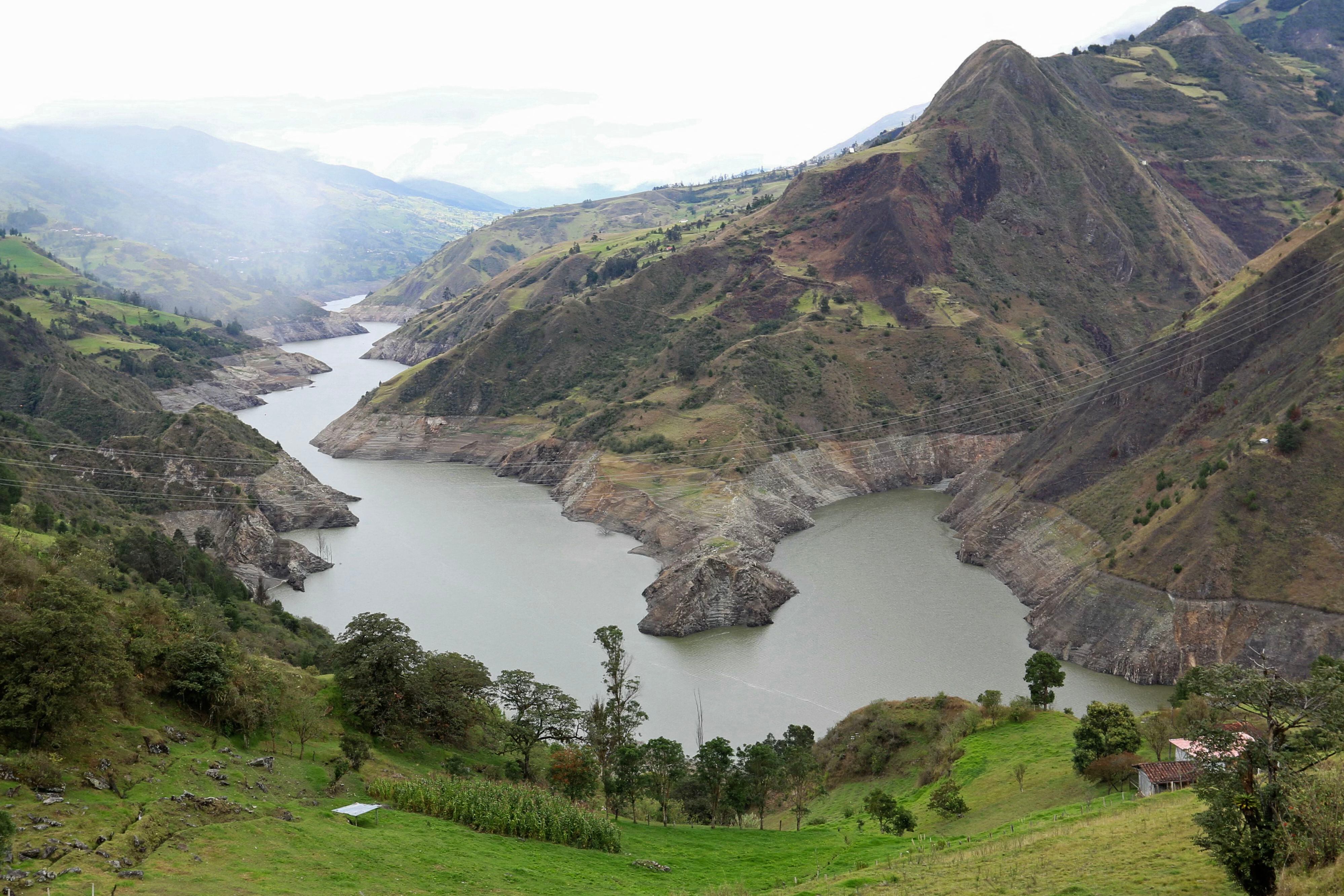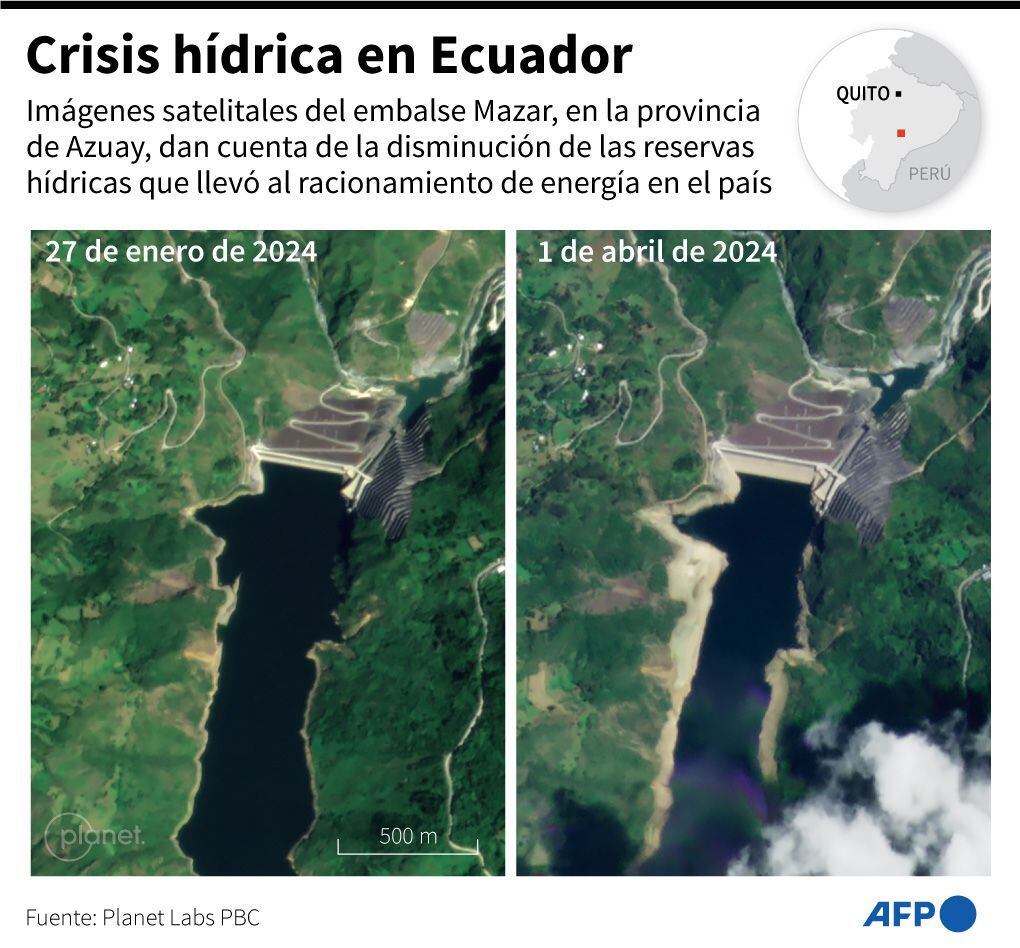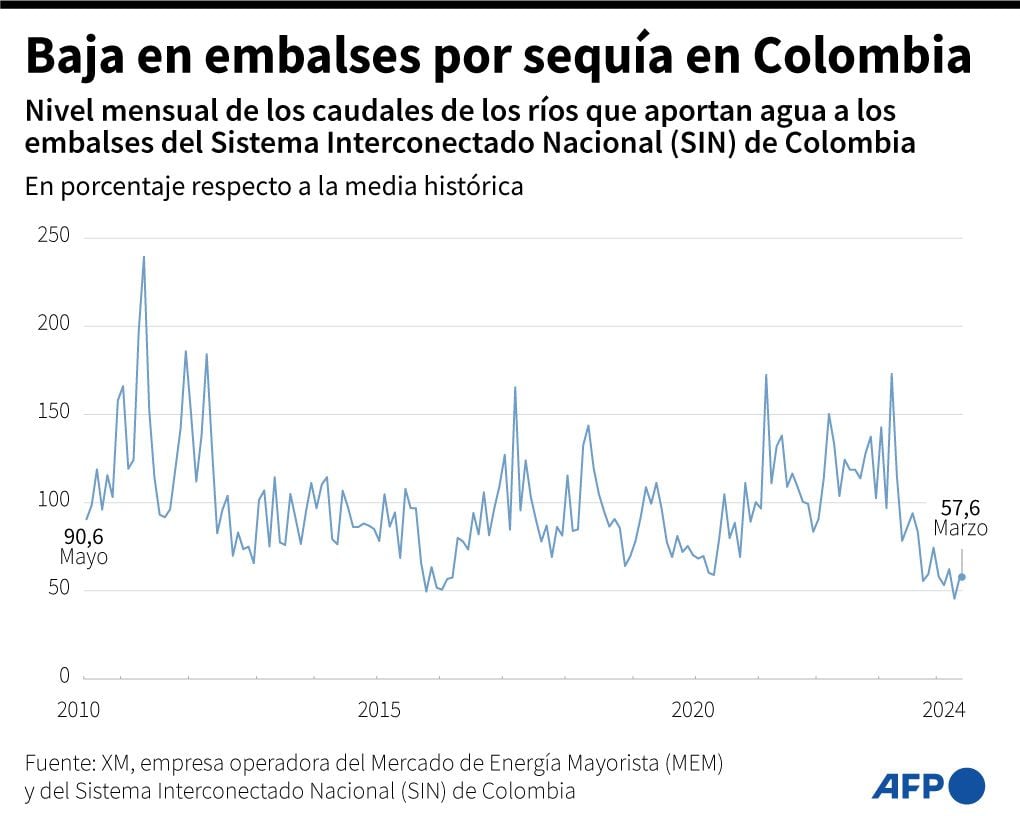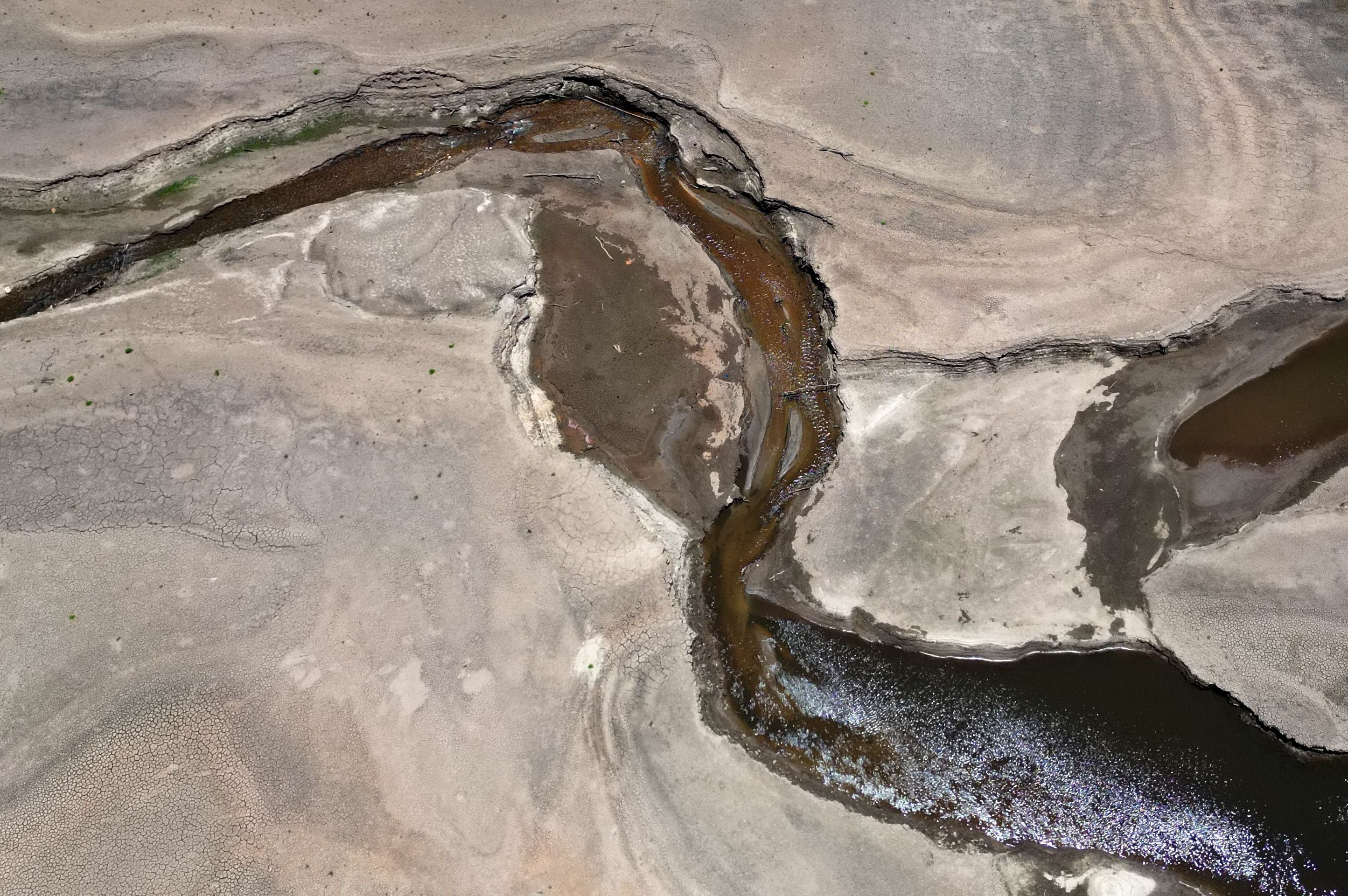Colombia It is Ecuador They are facing a critical situation due to the drought, which has led their authorities to implement water or electricity rationing and to decree the suspension of working days to save energy. Both countries are water powerhouses, but the lack of rain almost emptied their reservoirs. Added to this is the infrastructure deficit and dependence on hydroelectric plants to satisfy energy demand in both nations.
In case of EcuadorIn addition to El Niño phenomenon It’s from climate crisis, the president’s own government Daniel Noboa also mentioned a boycott as the cause of the power outage.
LOOK: What the Fujian is like, China’s new and largest aircraft carrier with which it seeks to get closer to the USA.
These are the keys to understanding the problem that both countries are going through:
On April 17, Ecuador announced a new energy rationing plan of up to 13 hours in some placeswith an average of eight hours on a national scale in different cities and areas according to consumption factors.
Even the Noboa Government decreed ““the suspension of the working day on Thursday, April 18th and Friday, April 19th”.
But as the days went by, rationing gradually decreased and last Tuesday it was two hours on average, as in the case of Quitoreported the EFE agency.
And on May 2nd, given the improvement in the flow of the rivers that feed several hydroelectric plants, The Government said scheduled national blackouts will be suspended for four days. On Sunday, the Executive finally announced the suspension of blackouts for another week, but clarified that this does not mean that the energy crisis has been overcome.

He Mazar Reservoir It is the second largest Ecuador and, as EFE reports, is at the heart of the energy crisis.
Located in the Andean province of Azuayhas the capacity to store 410 million cubic meters of water for supplies three hydroelectric plants whose combined power is 1,757 megawatts, equivalent to more than a third of the demand for Ecuador.
In mid-April the Government recognized that the reservoir Mazar had no reserves to produce electricity and was out of operation. The water level dropped to 2,106 meters above sea level, very close to its minimum level of 2,098 meters.
According to the Ecuador Electrical Corporation (Celec), at the beginning of this year Mazar It had a level of around 2,143 meters above sea level, but gradually fell to the critical level. You can now walk through areas that until a few weeks ago were covered in waterreported EFE in April.

In the political sphere, the dramatic decrease in reservoir is not attributed to the drought, since the Government of Noboa said it may have been deliberately deflated as a boycott against the referendum held on Sunday, April 21st.
The Presidency’s Communication Secretary, Roberto Izurietaeven stated in an interview with Teleamazonas that “The floodgates were opened” and “they let the water flow”, until the reservoir became inoperative.
But Celec Sur manager José Gómez rejected this claim and clarified that “the dam has no floodgates where there may be inappropriate action.”
However, the Government insisted on its accusation and filed a complaint for alleged sabotage against 22 people for allegedly hiding information and not giving the corresponding warnings regarding this scenario. Among those accused is the former Minister of Energy and Mines Andrea Arrobo.

In April Ecuador stopped receiving energy supply that came from Colombiaa country that is also experiencing a difficult water situation and has suspended the export of electricity to its neighbor.
But on Monday last week, the Colombian president Gustavo Pedro announced on his account on the social network X that his country was “about to return to selling energy to Ecuador”, as Colombian reservoirs increased their water levels.
Ecuador began increasing its energy imports in late 2023 due to droughts associated with El Niño phenomenon.
Ecuador’s hydroelectric plants generate 92% of the energy the country needs7% come from thermo-hydraulic plants and 1% from non-conventional sources, according to government data.

On Thursday, April 11, drinking water rationing began in areas of Bogotámeasure that affects more than seven million inhabitants.
Why was this extreme measure taken? The reason was that the reservoir system Chingazaone of the main water suppliers, has reached critical levels as a result of The boy.
When rationing was announced, the reservoir level was at 16.63%, and the goal was that, with the measures, it would reach 20.13% by the end of April.
However, a few days later, the mayor of Bogotá, Carlos Fernando Galán, said that the restriction was not giving the expected results and tightened the measures. He even said that the next step would be electricity rationing.

“Houses that use more than 22 cubic meters of water per month will have to pay additional fees”said the mayor. He also warned against imposing fines of up to US$300 on people who wash their cars on the streets or carry out other activities considered a waste of water.
Basically, the lack of rain in the center of the country led authorities to Bogotá to take these measures.
In April, the Ministry of Mines and Energy reported that historic lows have been reached in the levels of reservoirs intended for energy generation, which is why he indicated that there is the possibility of ordering rationing.
70% of electricity in Colombia is generated by hydroelectric plants and the rest comes thermoelectric and wind and photovoltaic sources.

Since January Colombia faces a unprecedented drought due to El Niño phenomenon and other factors, which wreak havoc on your water resources.
Ghisliane Echeverry, general director of the Institute of Hydrology, Meteorology and Environmental Studies (Ideal) from Colombia, assured that The El Niño phenomenon was not the only variable having had very dry March and April, which resulted in greater chances of fires and low water levels in the reservoirs that supply Bogotá and neighboring cities.
“Among the factors is the weakening of winds due to a thermal anomaly in the Atlantic Ocean,” he said.
According to mongabay.com, The rainy season in Colombia was expected to begin in the second half of March, but the intertropical convergence zone, where the trade winds from the northern hemisphere meet those from the southern hemisphere, has been quite weak, which has not allowed the usual arrival of precipitation for this time of year.
Regarding infrastructure, in the case of Colombia This has not been expanded to the rate of demographic growth.
Furthermore, when he was mayor of Bogotá (2012-2015), the current president Gustavo Pedro scrapped, for environmental reasons, the construction of a new drinking water reservoirrecalled AFP.
In case of Ecuadorenergy consultant Jorge Luis Hidalgo told the AFP agency that in the country also there is an infrastructure deficit and that subsidies in the sector are the big problem in the future.
He argued that Mining companies and other large companies benefit from preferential electricity rateswhich are almost ten times lower than the price the State has paid for imports since Colombia.
For Hidalgo, The money that enters the country is not enough to expand infrastructure, nor for “maintenance and operations”. It is a system that leaves no “return on investment”, she explained.
Source: Elcomercio
I am Jack Morton and I work in 24 News Recorder. I mostly cover world news and I have also authored 24 news recorder. I find this work highly interesting and it allows me to keep up with current events happening around the world.

:quality(75)/cloudfront-us-east-1.images.arcpublishing.com/elcomercio/Z3CLDJXAPZAWBGSL2QFM4N5IJA.jpg)




:quality(75)/cloudfront-us-east-1.images.arcpublishing.com/elcomercio/PJCLM4FUVZCPNDVXZYOV3C54G4.jpg)
